Live and Let Die (film)
6.6 /10 1 Votes
66% Rotten Tomatoes Genre Action, Adventure, Thriller Country United Kingdom | 6.8/10 IMDb Duration Language English | |||||||||||||||||||||||||||||||||
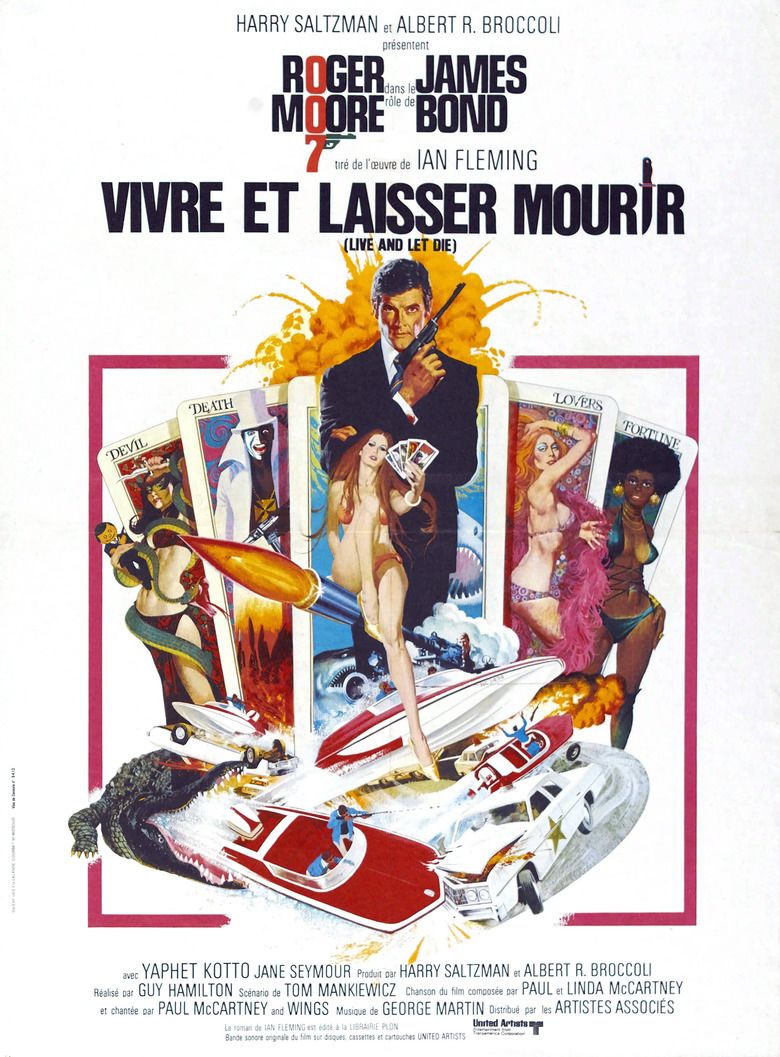 | ||||||||||||||||||||||||||||||||||
Cast (James Bond), (Kananga/Mr. Big), (Solitaire), (Sheriff J.W. Pepper), Julius Harris (Tee Hee), (Baron Samedi)Similar movies The Living Daylights , Dr. No , Mission: Impossible , , A View to a Kill , Tomorrow Never Dies Tagline Roger Moore is James Bond. | ||||||||||||||||||||||||||||||||||
Live and let die 1973 official trailer roger moore james bond movie hd
Live and Let Die (1973) is the eighth spy film in the James Bond series to be produced by Eon Productions, and the first to star Roger Moore as the fictional MI6 agent James Bond. Produced by Albert R. Broccoli and Harry Saltzman, it was the third of four Bond films to be directed by Guy Hamilton. Although the producers had wanted Sean Connery to return after his role in the previous Bond film Diamonds Are Forever, he declined, sparking a search for a new actor to play James Bond. Moore was signed for the lead role.
Contents
- Live and let die 1973 official trailer roger moore james bond movie hd
- Live and let die 1973 intro
- Plot
- Cast
- Production
- Casting
- Filming
- Music
- Release
- Reception
- Live and let die movie clip crocodile 1973 hd
- References
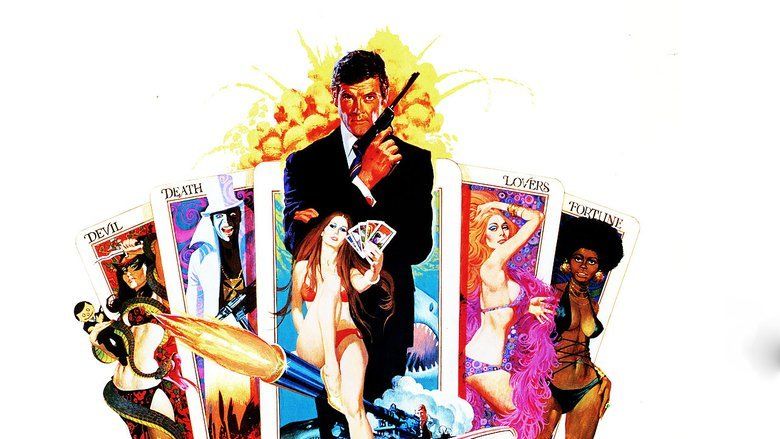
The film is adapted from the novel of the same name by Ian Fleming. In the film, a Harlem drug lord known as Mr. Big plans to distribute two tons of heroin free to put rival drug barons out of business. Mr. Big is revealed to be the disguised alter ego of Dr. Kananga, a corrupt Caribbean dictator, who rules San Monique, the fictional island where the heroin poppies are secretly farmed. Bond is investigating the deaths of three British agents, leading him to Kananga, and is soon trapped in a world of gangsters and voodoo as he fights to put a stop to the drug baron's scheme.
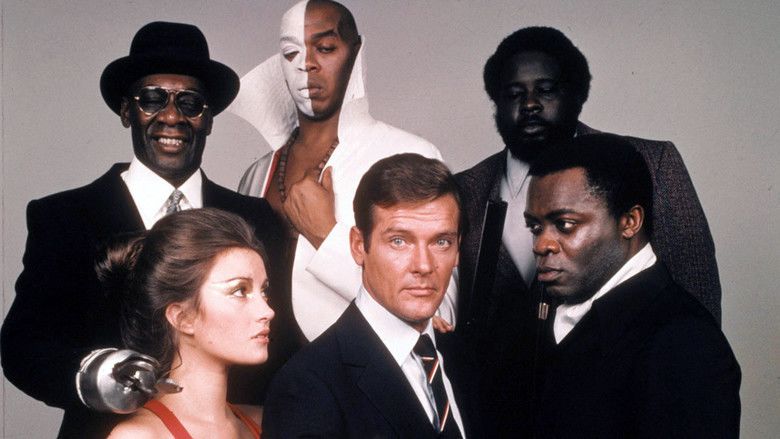
Live and Let Die was released during the height of the blaxploitation era, and many blaxploitation archetypes and clichés are depicted in the film, including derogatory racial epithets ("honky"), black gangsters, and pimpmobiles. It departs from the former plots of the James Bond films about megalomaniac super-villains, and instead focuses on drug trafficking, a common theme of blaxploitation films of the period. It is set in African American cultural centres such as Harlem and New Orleans, as well as the Caribbean Islands. It was also the first James Bond film featuring an African American Bond girl to be romantically involved with 007, Rosie Carver, who was played by Gloria Hendry. The film was a box office success and received generally positive reviews from critics. It was also nominated for the Academy Award for Best Original Song for "Live and Let Die", written by Paul and Linda McCartney and performed by their band Wings.
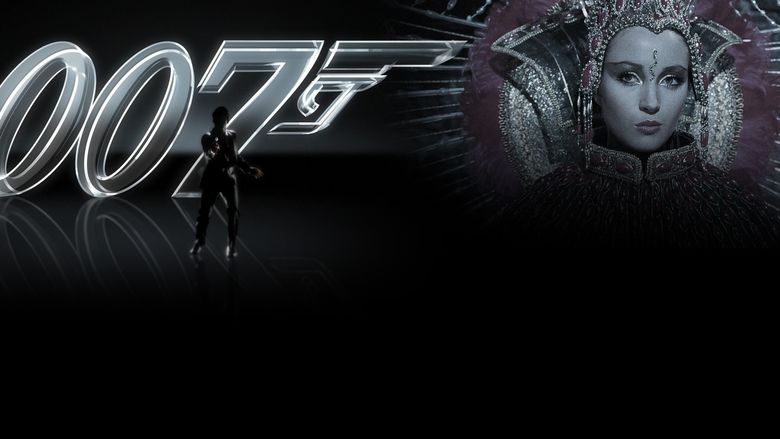
Live and let die 1973 intro
Plot

Three MI6 agents, including one "on loan" to the American government, are killed under mysterious circumstances within 24 hours in the United Nations, New Orleans and a Caribbean nation, San Monique, while monitoring the operations of the island's dictator Dr. Kananga. James Bond, agent 007, is sent to New York City to investigate the first murder. Kananga is also in New York, visiting the United Nations and representing San Monique. Just after Bond arrives, his driver is shot dead by Whisper, one of Kananga's men, while taking Bond to meet Felix Leiter of the CIA. Bond is nearly killed in the ensuing car crash.

A trace on the killer's licence plate eventually leads Bond to Mr. Big, a ruthless gangster who runs a chain of Fillet of Soul restaurants throughout the United States. It is here that Bond first meets Solitaire, a beautiful tarot expert who has the power of the Obeah and can see both the future and remote events in the present. Mr. Big, who is actually Kananga in disguise, demands that his henchmen kill Bond, but Bond overpowers them and escapes unscathed. Bond flies to San Monique, where he meets Rosie Carver, a CIA double agent. They meet up with a friend of Bond's, Quarrel Jr., who takes them by boat near Solitaire's home. Bond suspects Rosie of working for Kananga. She is shot dead, remotely, by Kananga, to stop her confessing the truth to Bond. Inside Solitaire's house, Bond uses a stacked tarot deck of cards, that show only "The Lovers", to trick her into thinking that seduction is in her future, and then seduces her. Solitaire loses her ability to foretell the future when she loses her virginity to Bond, and decides to co-operate with Bond as she has feelings for him and has grown tired of being controlled by Kananga.
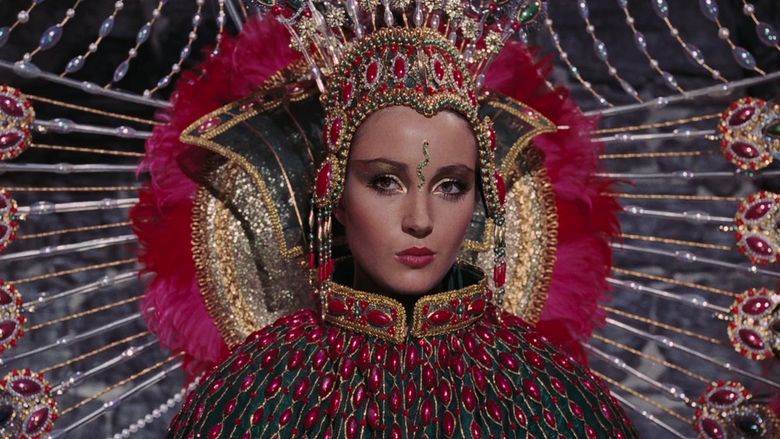
Bond and Solitaire escape by boat and fly to New Orleans. There, Bond is captured by Kananga. It transpires that Kananga is producing two tons of heroin and is protecting the poppy fields by exploiting San Monique locals' fear of voodoo priest Baron Samedi, and the occult. Through his alter ego, Mr. Big, Kananga plans to distribute the heroin free of charge at his Fillet of Soul restaurants, which will increase the number of addicts. He intends to bankrupt other drug dealers with his giveaway, then charge high prices for his heroin later in order to capitalize on the huge drug dependencies he has cultivated.
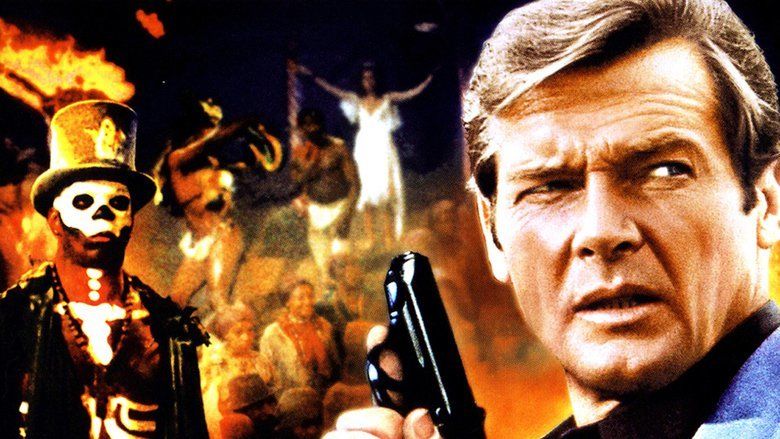
When Kananga finds out that Bond slept with Solitaire, he turns her over to Baron Samedi to be sacrificed. He is angry because her ability to read tarot cards is gone, and he wanted to be the one to take her powers away. Meanwhile, Kananga's one-armed henchman, Tee Hee Johnson, leaves Bond to be eaten by alligators at a farm in the Louisiana backwoods. Bond escapes by running along the animals' backs to safety. After setting a drug lab on fire, he steals a speedboat and escapes, pursued by both Kananga's men and Sheriff J.W. Pepper and the Louisiana State Police.
Bond travels to San Monique and sets timed explosives throughout the poppy fields. He rescues Solitaire from the voodoo sacrifice and throws Samedi into a coffin of poisonous snakes. Bond and Solitaire escape below ground into Kananga's lair. Kananga captures them both and proceeds to lower them into a shark tank. Bond escapes and forces Kananga to swallow a compressed-gas pellet used in shark guns, causing his body to inflate and explode.
Leiter puts Bond and Solitaire on a train leaving the country. Tee Hee sneaks aboard and attempts to kill Bond, but Bond cuts the wires of his prosthetic arm and throws him out the window. As the film ends, a laughing Samedi is revealed to be perched on the front of the speeding train.
Cast
Production
While filming Diamonds Are Forever, Live and Let Die was chosen as the next Ian Fleming novel to be adapted because screenwriter Tom Mankiewicz thought it would be daring to use black villains, as the Black Panthers and other racial movements were active at this time. Guy Hamilton was again chosen to direct, and since he was a jazz fan, Mankiewicz suggested he film in New Orleans. Hamilton did not want to use Mardi Gras since Thunderball featured Junkanoo, a similar festivity, so after more discussions with the writer and location scouting with helicopters, he decided to use two well-known features of the city, the jazz funerals and the canals.
To develop a better feel of how Voodoo was practised, Saltzman and Broccoli escorted Hamilton, Mankiewicz and production designer Syd Cain to scout New Orleans further and then the islands of the West Indies. Haiti was an important destination of the tour and not only did Fleming connect it with the religion, there were many practitioners available to witness. Despite viewing actual demonstrations, due to political unrest in the country at the time, it was decided not to film in Haiti.
While searching for locations in Jamaica, the crew discovered a crocodile farm owned by Ross Kananga, after passing a sign warning that "trespassers will be eaten." The farm was put into the script and also inspired Mankiewicz to name the film's villain after Kananga.
Casting
Broccoli and Saltzman tried to convince Sean Connery to return as James Bond, but he declined. At the same time United Artists approached both Batman actor Adam West and Burt Reynolds. Reynolds told the studios that Bond should be played by an Englishman and turned the offer down. Among the actors to test for the part of Bond were Julian Glover, John Gavin, Jeremy Brett, Simon Oates, John Ronane, and William Gaunt. The main frontrunner for the role was Michael Billington. United Artists was still pushing to cast an American to play Bond but producer Albert R. Broccoli insisted that the part should be played by a British actor and put forward Roger Moore. After Moore was chosen, Billington remained on the top of the list in the event that Moore would decline to come back for the next film. Billington ultimately played a brief role in the pre-credit sequence of The Spy Who Loved Me (1977). Moore, who had been considered by the producers before both Dr. No and On Her Majesty's Secret Service, was ultimately cast. He tried not to imitate either Connery's or his own prior performance as Simon Templar in The Saint, and Mankiewicz fitted the screenplay into Moore's persona by giving more comedy scenes and a light-hearted approach to Bond.
Mankiewicz had thought of turning Solitaire into a black woman, with Diana Ross as his primary choice. However, Broccoli and Saltzman decided to stick to Fleming's description of a white woman, and after thinking of Catherine Deneuve, Jane Seymour, who was in the TV series The Onedin Line, was cast for the role. Yaphet Kotto was cast while doing another movie for United Artists, Across 110th Street. Kotto reported one of the things he liked in the role was Kananga's interest in the occult, "feeling like he can control past, present and future".
Mankiewicz created Sheriff J.W. Pepper to add a comic relief character. Portrayed by Clifton James, Pepper appeared again in The Man with the Golden Gun. Live and Let Die is also the first of two films featuring David Hedison as Felix Leiter, who reprised the role in Licence to Kill. Hedison had said "I was sure that would be my first and last", before being cast again.
Madeline Smith, who played Miss Caruso, sharing Bond's bed in the film's opening, was recommended for the part by Roger Moore after he had appeared with her on TV. Smith said that Moore was extremely polite to work with, but she felt very uncomfortable being clad in only blue bikini panties while Moore's wife was on set overseeing the scene.
This was the only Bond film until 2006 not to feature 'Q', played at this stage by Desmond Llewelyn. He was then appearing in the TV series Follyfoot, but was written out of three episodes to appear in the film. By then, Saltzman and Broccoli decided not to include the character, feeling that "too much was being made of the films' gadgets", and decided to downplay this aspect of the series, much to Llewelyn's annoyance.
Filming
Principal photography began in October 1972, in Louisiana. For a while only the second unit was shot after Moore was diagnosed with kidney stones. In November production moved to Jamaica, which doubled for the fictional San Monique. In December, production was divided between interiors in Pinewood Studios and location shooting in Harlem. The producers were reportedly required to pay protection money to a local Harlem gang to ensure the crew's safety. When the cash ran out, they were "encouraged" to leave. Some exteriors were in fact shot in Manhattan's Upper East Side as a result of the difficulties of using real Harlem locations.
Ross Kananga suggested the stunt of Bond jumping on crocodiles, and was enlisted by the producers to perform it. The scene took five takes to be completed, including one in which the last crocodile snapped at Kananga's heel, tearing his trousers. The production also had trouble with snakes. The script supervisor was so afraid that she refused to be on set with them; an actor fainted while filming a scene where he is killed by a snake; Jane Seymour became terrified as a reptile got closer, and Geoffrey Holder only agreed to fall into the snake-filled casket because Princess Alexandra was visiting the set.
The boat chase was filmed in Louisiana around the Irish Bayou area, with some interruption caused by flooding. Twenty-six boats were built by the Glastron boat company for the film. Seventeen were destroyed during rehearsals. The speedboat jump scene over the bayou, filmed with the assistance of a specially-constructed ramp, unintentionally set a Guinness World Record at the time with 110 feet (34 m) cleared. The waves created by the impact caused the following boat to flip over.
The chase involving the double-decker bus was filmed with a second-hand London bus adapted by having a top section removed, and then placed back in situ running on ball bearings to allow it to slide off on impact. The stunts involving the bus were performed by Maurice Patchett, a London Transport bus driving instructor.
Music
John Barry, who had worked on the previous five themes and orchestrated the "James Bond Theme", was unavailable during production. Broccoli and Saltzman instead asked Paul McCartney to write the theme song. Since McCartney's salary was high and another composer could not be hired with the remainder of the music budget, George Martin, who had been McCartney's producer while with The Beatles, was chosen to write the score for the film. "Live and Let Die", written by McCartney along with his wife Linda and performed by their group Wings, was the first true rock and roll song used to open a Bond film, and became a major success in the UK (where it reached number nine in the charts) and the US (where it reached number 2, for three weeks). It was nominated for an Academy Award but lost to "The Way We Were". Producers hired B. J. Arnau to record and perform the title song, not realising McCartney intended to perform it himself. Arnau's version was featured in the film itself, when the singer performed it in a night club which Bond attends.
The Olympia Brass Band has a notable part in "Live and Let Die", where they lead a funeral march for a (soon to be) assassination victim. Trumpeter Alvin Alcorn plays the killer. The piece of music the band plays at the beginning of the funeral march is "Just a Closer Walk with Thee". After the agent is stabbed, the band starts playing the more lively "Joe Avery's Piece" (aka "New Second Line").
Release
The film was released in the United States on 27 June 1973. The world premiere was at Odeon Leicester Square in London on 6 July 1973, with general release in the United Kingdom on the same day. From a budget of around $7 million, ($38 million in 2016 dollars) the film grossed $161.8 million ($873 million in 2016 dollars) worldwide.
The film holds the record for the most viewed broadcast film on television in the United Kingdom by attracting 23.5 million viewers when premiered on ITV on 20 January 1980.
Reception
The reviews were mostly positive, with praise for the action scenes, and Rotten Tomatoes gave the film a 66% "fresh" rating.
Ian Nathan of Empire wrote "This is good quality Bond, managing to reinterpret the classic moves - action, deduction, seduction - for a more modern idiom without breaking the mould. On one side we get the use of alligators as stepping stones and the pompous pitbull of rootin' tootin' Sheriff Pepper caught up in the thrilling boat chase. On the other, the genuine aura of threat through weird voodoo henchman Tee Hee and the leaning toward - what's this? - realism in Mr Big's plot to take over the drug trade from the Mafia." He concluded that "Moore had got his feet under the table."
Roger Ebert of the Chicago Sun-Times stated that Moore "has the superficial attributes for the job: The urbanity, the quizzically raised eyebrow, the calm under fire and in bed". However, he felt that Moore wasn't satisfactory in living up to the legacy left by Sean Connery in the preceding films. He rated the villains "a little banal", adding that the film "doesn't have a Bond villain worthy of the Goldfingers, Dr. Nos and Oddjobs of the past." Chris Nashawaty similarly argues that Dr. Kananga/Mr. Big is the worst villain of the Roger Moore James Bond films. BBC Films reviewer William Mager praised the use of locations, but said that the plot was "convoluted". He stated that "Connery and Lazenby had an air of concealed thuggishness, clenched fists at the ready, but in Moore's case a sardonic quip and a raised eyebrow are his deadliest weapons". Reviewer Leonard Maltin rated the film two and a half stars out of four, describing it as a "barely memorable, overlong James Bond movie" that "seems merely an excuse to film wild chase sequences". Danny Peary noted that Jane Seymour portrays "one of the Bond series's most beautiful heroines" but had little praise for Moore, whom he described as making "an unimpressive debut as James Bond in Tom Mankiewicz's unimaginative adaptation of Ian Fleming's second novel…The movie stumbles along most of the way. It's hard to remember Moore is playing Bond at times – in fact, if he and Seymour were black, the picture could pass as one of the black exploitation films of the day. There are few interesting action sequences – a motorboat chase is trite enough to begin with, but the filmmakers make it worse by throwing in some stupid Louisiana cops, including pot-bellied Sheriff Pepper."
IGN ranked Solitaire as 10th in a Top 10 Bond Babes list. In November 2006, Entertainment Weekly listed Live and Let Die as the third best Bond film. MSN chose it as the thirteenth best Bond film and IGN listed it as twelfth best.
In 2004 the American Film Institute nominated the song "Live and Let Die" from the film for AFI's 100 Years...100 Songs.
Live and let die movie clip crocodile 1973 hd
References
Live and Let Die (film) WikipediaLive and Let Die (film) IMDbLive and Let Die (film) Rotten TomatoesLive and Let Die (film) themoviedb.org
